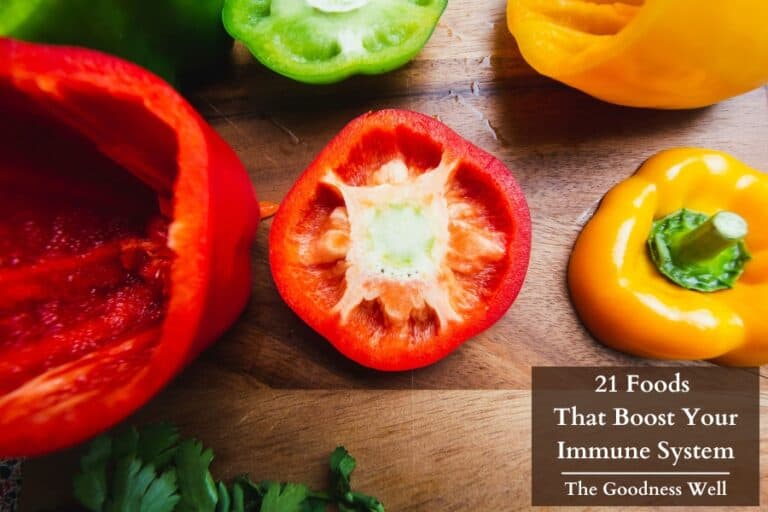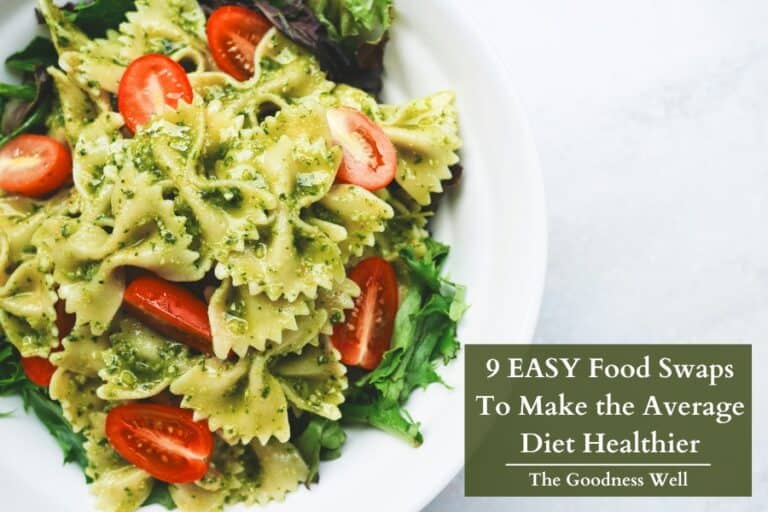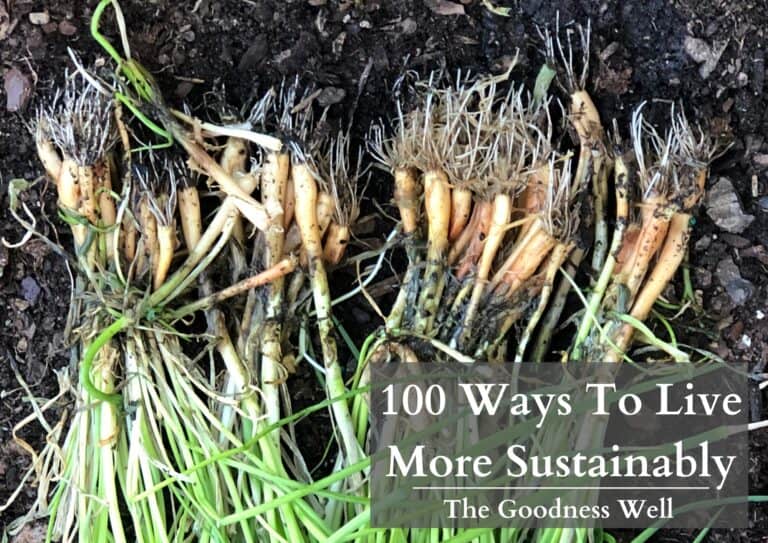The 10 Dangerous Chemicals in Foods Every Family Should Avoid
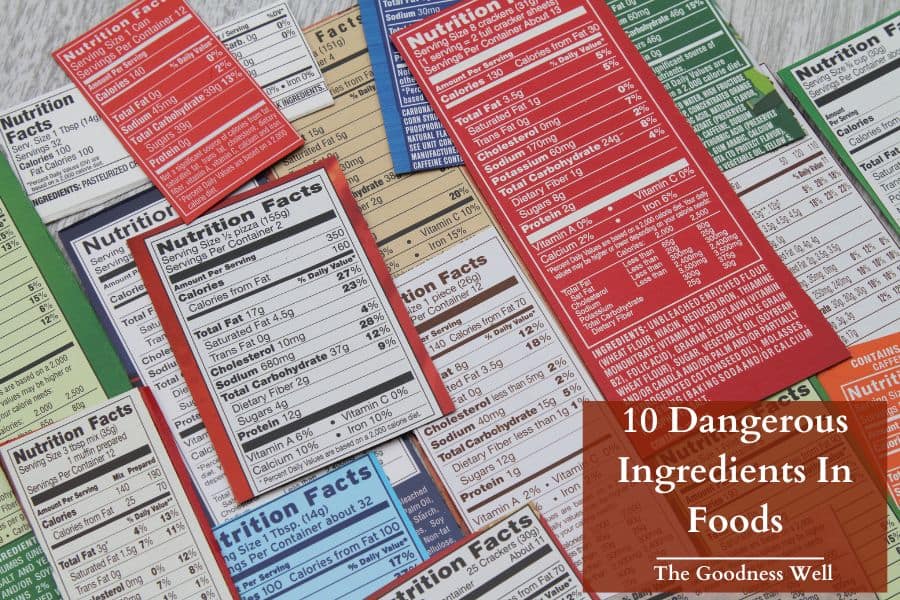
Growing up, I never thought twice about the “chemicals” or ingredients that were in my food. I mean, that’s what the government and other regulatory agencies are there for right? To protect us from harmful chemicals in our food?
I sure did give them too much credit.
Did you know there are food additives that haven’t been reviewed by the FDA in decades? And many ingredients used in the US even banned in other countries like Europe.
While agencies like the FDA do prevent many harmful chemicals in our foods, they also allow quite a few as well.
Today, we’ll talk about the top 10 most dangerous and common ingredients found in food, how you can avoid them, and safer alternatives.
Here we go!
1. BPA & Its Alternatives
I’m sure, you’ve heard of this one.
BPA (Bisphenol A) is a chemical used to harden plastics and create protective linings in food and beverage containers.
While it is very useful for packaging and protecting foods, research shows BPA can leach into our foods.
And no, it doesn’t provide extra flavor.
BPA is a known endocrine disruptor even in small amounts which is especially concerning for women and developing children.
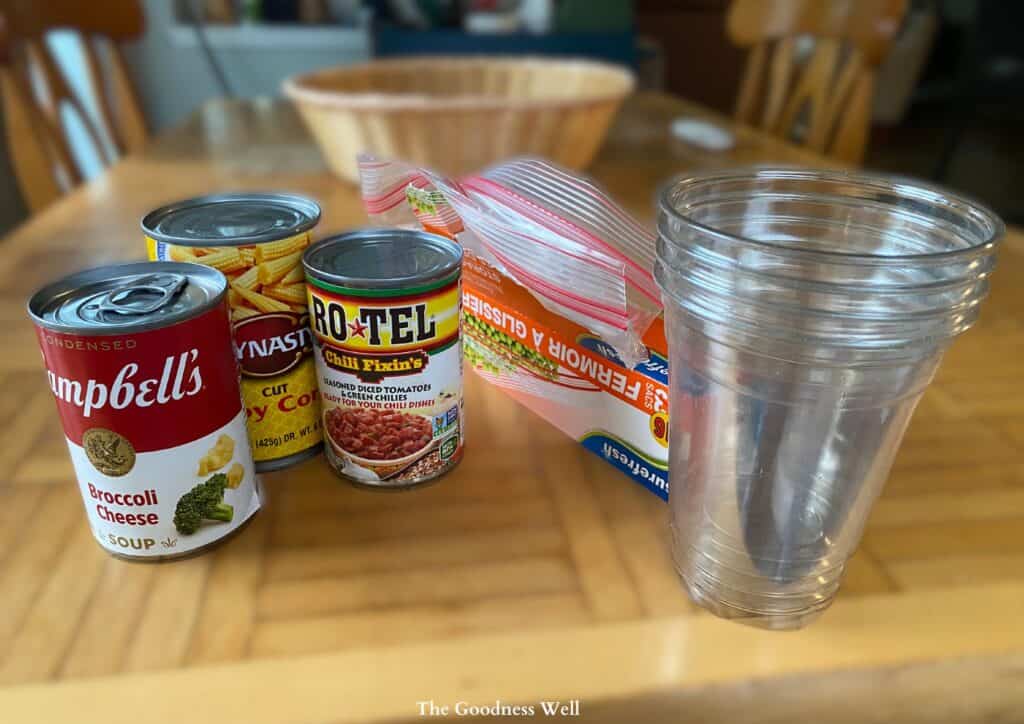
Common Sources of BPA:
- Canned foods (especially acidic foods like tomatoes)
- Hard plastic food storage containers
- Water bottles and baby bottles
How to Avoid BPA:
Avoiding plastic overall is not only great for the health of our environment and the people in it, but it’s an almost surefire way to avoid BPA.
- Choose glass, stainless steel, or ceramic containers
- Don’t trust “BPA-free” products
- Use glass jars or carton-packed products instead of canned foods
- Never microwave food in plastic containers
- Opt for fresh or frozen vegetables instead of canned
- Choose wooden or bamboo cutlery over plastic
Safer Alternatives:
- Mason jars for food storage
- Stainless steel water bottles
- Silicone Ziploc bags
- Glass food storage containers with silicone lids
- Parchment paper instead of plastic wrap
- Cardboard or glass-packed foods
- Porcelain or ceramic dishware
- Stainless steel lunch containers
2. PFAS (“Forever Chemicals”)
PFAS (per- and polyfluoroalkyl substances) are synthetic chemicals used in food and packaging materials for their water-resistant and non-stick properties.
They’re also known as “forever chemicals” because they don’t break down in the environment or our bodies and can accumulate over time.
These chemicals are linked to cancer, fertility issues, liver damage, and a host of other problems. Nothing you want you or your kids exposed to.
Common Sources of PFAS:
- Microwave popcorn bags
- Fast food wrappers and boxes
- Pizza boxes
- Stain-resistant food packaging
- Non-stick cookware (especially older Teflon pans)
- Takeout containers with grease-resistant coatings
- Drinking water (especially near manufacturing facilities)
- Some coffee filters
We took note of this issue years ago and have phased out many of these PFAS sources in our home. Here are the safe alternatives we use:
- Skip microwave popcorn (use stovetop or air popper instead)
- Avoid fast food when possible
- Get a water filter
- Avoid food packaged in grease-resistant materials
- Get rid of the old cookware
3. Phthalates
Phthalates are chemicals used to make plastics more flexible and durable. They’re very commonly used in food packaging and food processing equipment.
Due to their structure, they can easily migrate into materials they come in contact with (like your food).
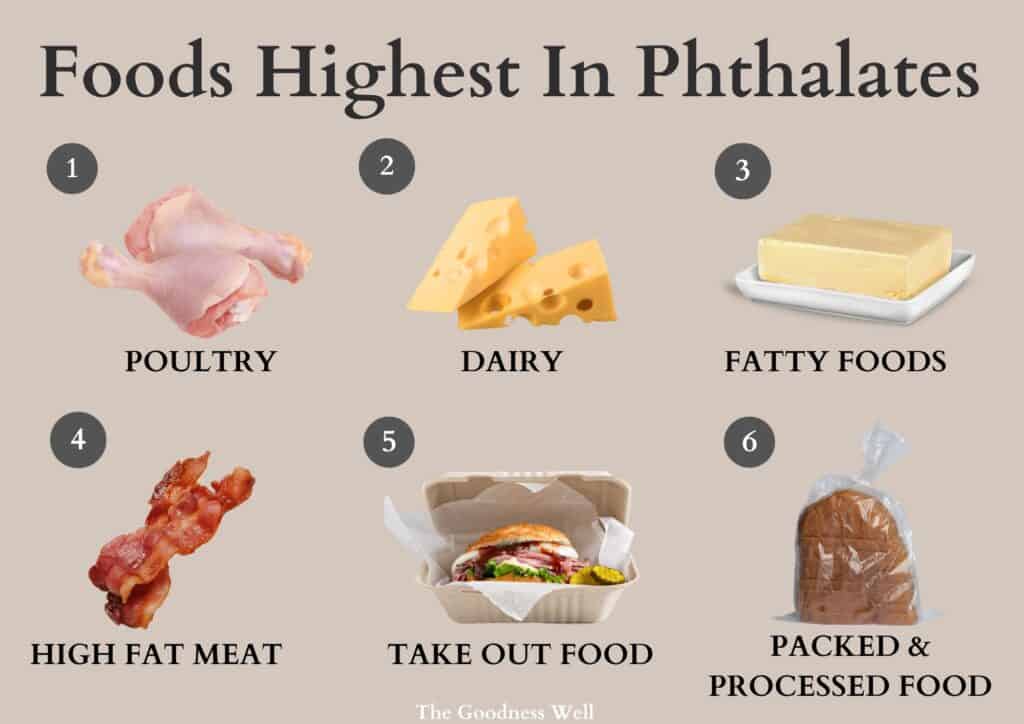
This is especially true for food high in fat like cheese, meat, butter, oils, and fast food items. Now think about how many of those are usually wrapped in plastic.
Yikes.
The problem is these chemicals are known endocrine disruptors, linked to reproductive issues and delayed development in children.
The scary part is they aren’t going to be listed on labels since they are just a part of the packaging.
However, here are some tips for avoiding these nasty chemicals.
Common Sources of Phthalates:
- Processed cheese and dairy products
- Fatty meats processed with plastic equipment
- Food packaged in soft plastic containers
- Plastic tubing used in dairy processing
- Some plastic wrap and food packaging
- Pre-packaged meals in plastic containers
Avoiding Phthalates:
- Eat more fresh, unprocessed foods (the golden rule in nutrition!)
- Avoid heavily processed foods
- Avoid foods packaged in soft, flexible plastics
- Store food in glass or stainless steel containers
- Never microwave food in plastic containers
- Choose low-fat dairy products (phthalates bind to fat)
4. Artificial Food Colors and Their Impact on Children
While fake food colorings might make food look exciting to your children, they aren’t doing their health any favors.

Research has linked these petroleum-based dyes to behavioral issues, hyperactivity, and attention problems in sensitive children.
The most concerning dyes include Red 40, Yellow 5, Yellow 6, and Blue 1 – which are found in everything from breakfast cereals to birthday cake frosting.
Fortunately, some states have been taking action with more looking to follow suit.
For example, California has become the first state to prohibit school cafeterias from serving foods that contain artificial dyes.
Common Sources of Artificial Food Colors:
- Colorful cereals and candy
- Flavored drinks and sports beverages
- Fruit snacks and fruit-flavored products
- Boxed macaroni and cheese
- Packaged baked goods
- Children’s medications
- Flavored yogurt and ice cream
- Processed snack foods
- Condiments (especially those marketed to kids)
Here are some healthier, natural alternatives you can choose instead. Be sure to look for these ingredients on labels instead of those chemicals we discussed above:

Natural Alternatives:
- Beet juice for red/pink coloring
- Turmeric for yellow
- Spirulina for blue/green
- Butterfly pea flower for purple/blue
- Carrot juice for orange
- Matcha for green
- Cocoa for brown
- Berry juices for purple/red
- Brands using natural colors:
- Simple Mills
- Annie’s Homegrown
- Trader Joe’s store brand
- Whole Foods 365 brand
- YumEarth
- UNREAL Candy
5. High Fructose Corn Syrup/Added Sugars
High fructose corn syrup (HFCS) is a super-processed sweetener made by breaking down corn into a sugary syrup and then chemically altering it to increase its fructose content.
The reason it is in SO many foods today, especially processed foods, is because it’s a cheaper alternative to sugar.
Here are some of the most common places you’ll find it:

Common Sources of HFCS:
- Sodas and sweetened beverages
- Breakfast cereals
- Granola bars and snack bars
- Flavored yogurt
- Bread and baked goods
- Condiments (ketchup, BBQ sauce)
- Fruit juices and juice drinks
- Canned fruits in syrup
- Boxed snacks and desserts
- Candy and chocolate
- Pre-made sauces and dressings
- “Healthy” breakfast foods
Sugar, and especially processed forms like this, are one of the most common causes of inflammation in our bodies.
Studies suggest excessive HFCS consumption contributes to obesity, type 2 diabetes, and liver problems.
Watch out for other highly processed sugars that are just as bad such as:
- Look for terms ending in “ose” (dextrose, fructose)
- Watch for syrups (corn syrup, rice syrup)
- Check for concentrated fruit juices
- Look for “sugar” in different forms (brown sugar, raw sugar)
- Know that ingredients are listed by quantity (highest first)
- New labels must list “Added Sugars” separately

While all sugar is still inflammatory in high amounts, look for healthier, more natural alternatives like:
Healthier Alternatives to HFCS:
- Pure maple syrup
- Raw honey
- Date syrup or purée
- Monk fruit sweetener
- Stevia (pure, not processed)
- Whole fruits for natural sweetness
- Applesauce (unsweetened)
- Coconut sugar
- Molasses
6. Artificial Preservatives
Preservatives are a highly debated topic. Yes, they ensure that our food isn’t growing harmful bacteria, but at what cost?
Certain studies suggest common artificial preservatives like BHA (Butylated hydroxyanisole), BHT (Butylated hydroxytoluene), and Propyl Gallate may be carcinogenic, and they’ve been linked to behavioral problems in children.

The European Union heavily restricts their use, but they are still very common in many American processed foods.
Here are common places you’ll find them:
- Breakfast cereals
- Packaged snack foods
- Packaged baked goods
- Beer
- Butter spreads and margarine
- Instant soups and noodles
- Packaged meat products
- Energy bars
- Mixed nuts and trail mixes

How to Avoid Synthetic Preservatives:
- Remember, the fresher and less packaged, the better!
- Read ingredient labels carefully
- Choose fresh foods over packaged
- Check vitamin supplements (they often contain BHA)
- Look for products that use natural preservatives like these
- Vitamin E (tocopherols)
- Rosemary extract
- Citric acid
- Ascorbic acid (Vitamin C)
- Sea salt
- Vinegar
- Natural fermentation
- Essential oils (like thyme or oregano)
7. MSG and Other Flavor Enhancers

Monosodium glutamate (MSG) is a chemical that enhances the flavor of food.
While it does occur naturally in some foods like tomatoes and cheese, the synthetic version is often added to processed foods to enhance flavor and mask low-quality ingredients.
Here are some common places you might find MSG:
- Chinese takeout and Asian cuisine
- Packaged snack foods (especially chips)
- Frozen meals
- Canned soups and broths
- Bouillon cubes and soup bases
- Processed meats
- Flavored crackers
- Ranch dressing and dips
- Seasoning blends
- Fast food items
- Instant noodles
- Salad dressings
These chemicals have been linked to headaches and digestive issues. And some research suggests children may be particularly sensitive to MSG.
Another problem with this chemical is that it hides under many nicknames such as:
- Hydrolyzed protein
- Autolyzed yeast
- Yeast extract
- Maltodextrin
- Natural flavors
- Glutamic acid
- Soy protein isolate
- Modified food starch
- Sodium caseinate
- Textured protein

Again, another reason to choose unprocessed, fresh foods.
But here are some more tips for avoiding these toxic flavor enhancers:
- Cook meals from scratch
- Make your own spice blends
- Choose organic broths
- Read ingredient lists carefully
- Use fresh ingredients
- Make homemade dressings and sauces
- Choose plain chips and add your own seasonings
- Look for “No MSG Added” certification
- Buy unprocessed meats
- Make your own soup stocks
The more hyperstimulating ingredients we use on a regular basis, the more “desensitized” our taste buds become. You don’t always need a sauce or other flavor enhancer!
8. Artificial Sweeteners and Sugar Substitutes

This one is a big one.
After all the research showing how bad too much sugar is for us came to light, what did we do?
We made artificial versions of it that don’t spike blood sugar as regular sugar does. Here is a list of the most common ones:
Common Artificial Sweeteners:
- Aspartame (NutraSweet, Equal)
- Sucralose (Splenda)
- Saccharin (Sweet’N Low)
- Acesulfame-K (Ace-K)
- Neotame
- Advantame
- Sugar alcohols (xylitol, sorbitol)
Where You’ll Find Them:
- Diet sodas and beverages
- “Sugar-free” products
- Low-calorie yogurt
- Sugar-free gum and mints
- Protein and meal replacement bars
- Children’s medicines
- “Light” juices
- Sugar-free candy
- “Zero” or “diet” labeled products
- Flavored water
Problem solved! But wait.. This sounds too good to be true. And it’s because it is.
While these “sugars” don’t spike blood sugar the same way regular sugar does, many studies are beginning to link these substitutes to other health problems such as altering gut bacteria, affecting metabolism, and increasing cravings for sweet foods.
Some research even suggests that regular consumption of artificial sweeteners might paradoxically lead to weight gain and blood sugar issues by disrupting the body’s ability to gauge calorie intake.
The commonly used sugar alcohol, erythritol, has actually been linked to an increase in blood clotting, which in turn increases your risk for cardiovascular events like stroke and heart attack.

So instead of these fake sweeteners, look for natural ways to sweeten your food such as:
- Stevia (pure leaf or minimally processed)
- Monk fruit extract
- Fresh fruit
- Cinnamon
- Mashed bananas
- Dates
- Apple sauce (unsweetened)
9. Pesticide Residues in Produce
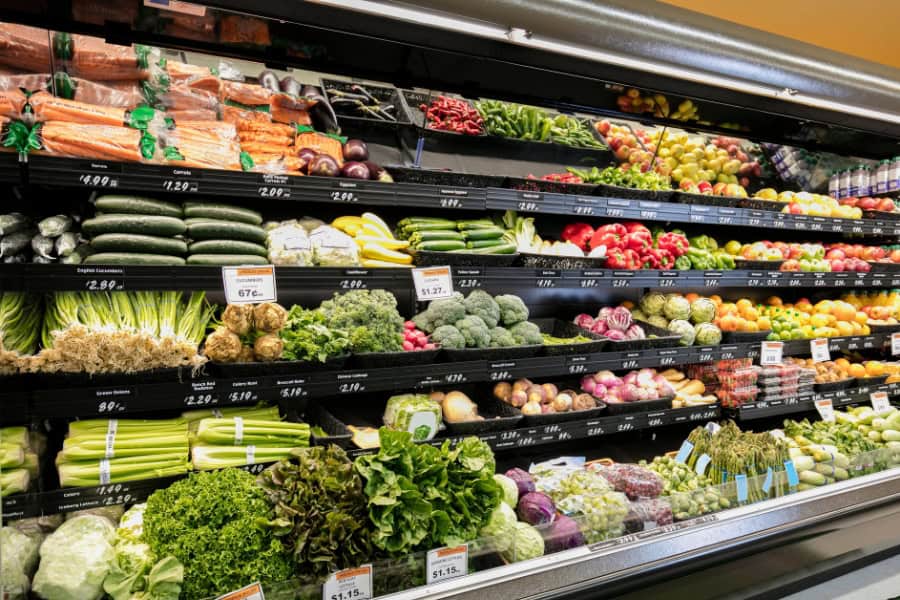
Pesticides are another highly debated topic. The US uses the 2nd most pesticides by country and even uses 85 pesticides banned in other countries.
While they claim these are safe, many studies prove they are not only harmful to the environment, animals, and insects but to humans as well.
While it is still recommended to eat your fruits and vegetables, even those with pesticides, as it outweighs the benefits of not eating them, you can take steps to reduce your exposure.
The Environmental Working Group’s annual “Dirty Dozen” list helps identify which produce items typically carry the highest pesticide residues, making it easier to decide when spending extra on organic is worth it.
Here are the 12 “Dirty Dozen” fruits and vegetables that commonly have the highest amount of pesticide residue and ones you should buy organic:
The “Dirty Dozen” (Highest Pesticides):
- Strawberries
- Spinach
- Kale and collard greens
- Nectarines
- Apples
- Grapes
- Bell peppers
- Cherries
- Peaches
- Pears
- Celery
- Tomatoes
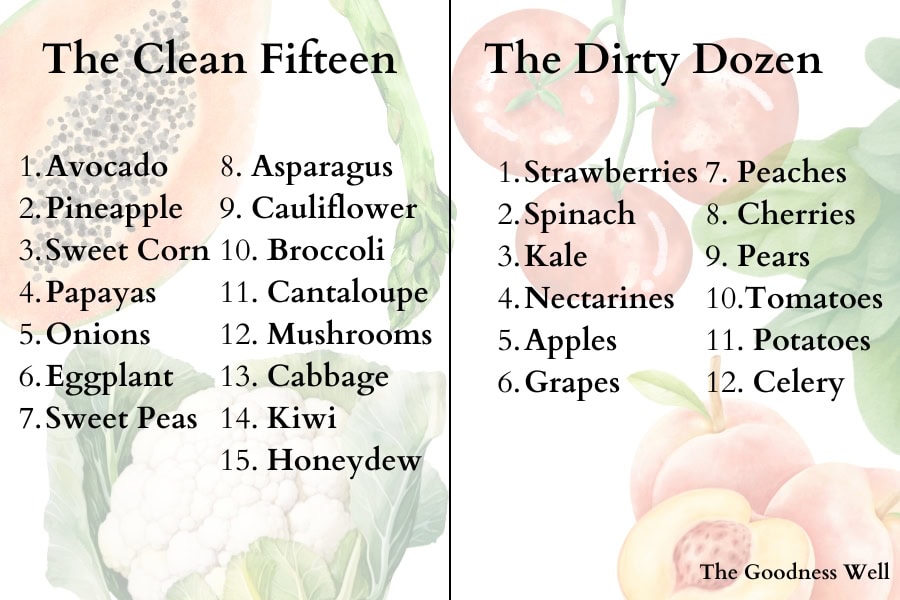
These are usually safe to buy non-organic if you choose.
Clean Fifteen (Lowest Pesticides):
- Avocados
- Sweet corn
- Pineapple
- Onions
- Papaya
- Frozen sweet peas
- Asparagus
- Honeydew melon
- Kiwi
- Cabbage
- Mushrooms
- Cantaloupe
- Mangoes
- Watermelon
- Sweet potatoes
In addition, always properly wash your fruits and veggies! Even organic ones.
10. Antibiotics and Growth Hormones in Animal Products

Antibiotics and growth hormones are widely used in conventional animal farming to prevent disease and speed up growth.
While this helps meat production, it can contribute to antibiotic-resistant bacteria, while growth hormones in meat and dairy products may affect human hormone levels, particularly in developing children.
This goes for any of the meat available at the store including:
- Conventional beef
- Commercial dairy products
- Factory-farmed chicken
- Farm-raised fish
- Conventional eggs
- Processed meat products
- Commercial cheese
- Conventional milk
- Mass-produced butter
- Standard yogurt products
Instead, look for the following labels, in order of importance:
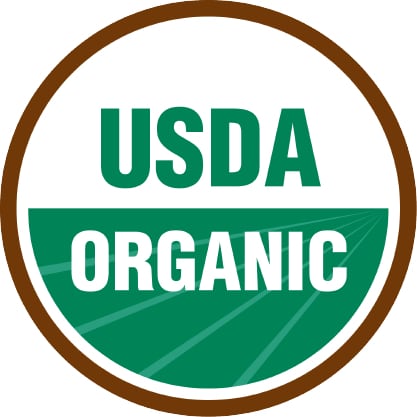
- Animal Welfare Approved
- Certified Humane
- Organic
- No Antibiotics Ever
- Pasture-raised
- Grass-fed
- Wild-caught (for fish)
- Hormone-free or No added hormones
- rBGH-free (for dairy)
- Free-range
Here are some budget-friendly tips for avoiding animals with antibiotics or hormones, as I know how expensive higher-quality cuts of meat are:
Budget-Friendly Alternatives:
- Buy less meat, choose better quality
- Purchase in bulk when on sale
- Join a meat CSA
- Shop at farmers markets
- Choose cheaper cuts of quality meat
- Use eggs as protein source
- Consider organic milk alternatives
- Look for store-brand organic options
- Buy directly from local farms
- Focus on plant-based proteins
Protecting us and our families from harmful ingredients doesn’t need to involve a complete overhaul of our fridge.
It’s all about educating ourselves and making one better choice at our next trip to the grocery store. Every small change counts!
It’s also one less dollar we put in the pocket of those that don’t care and an extra that goes to those that do.
Thanks for reading and let us know if you have any questions or comments! Follow us on our socials below!



